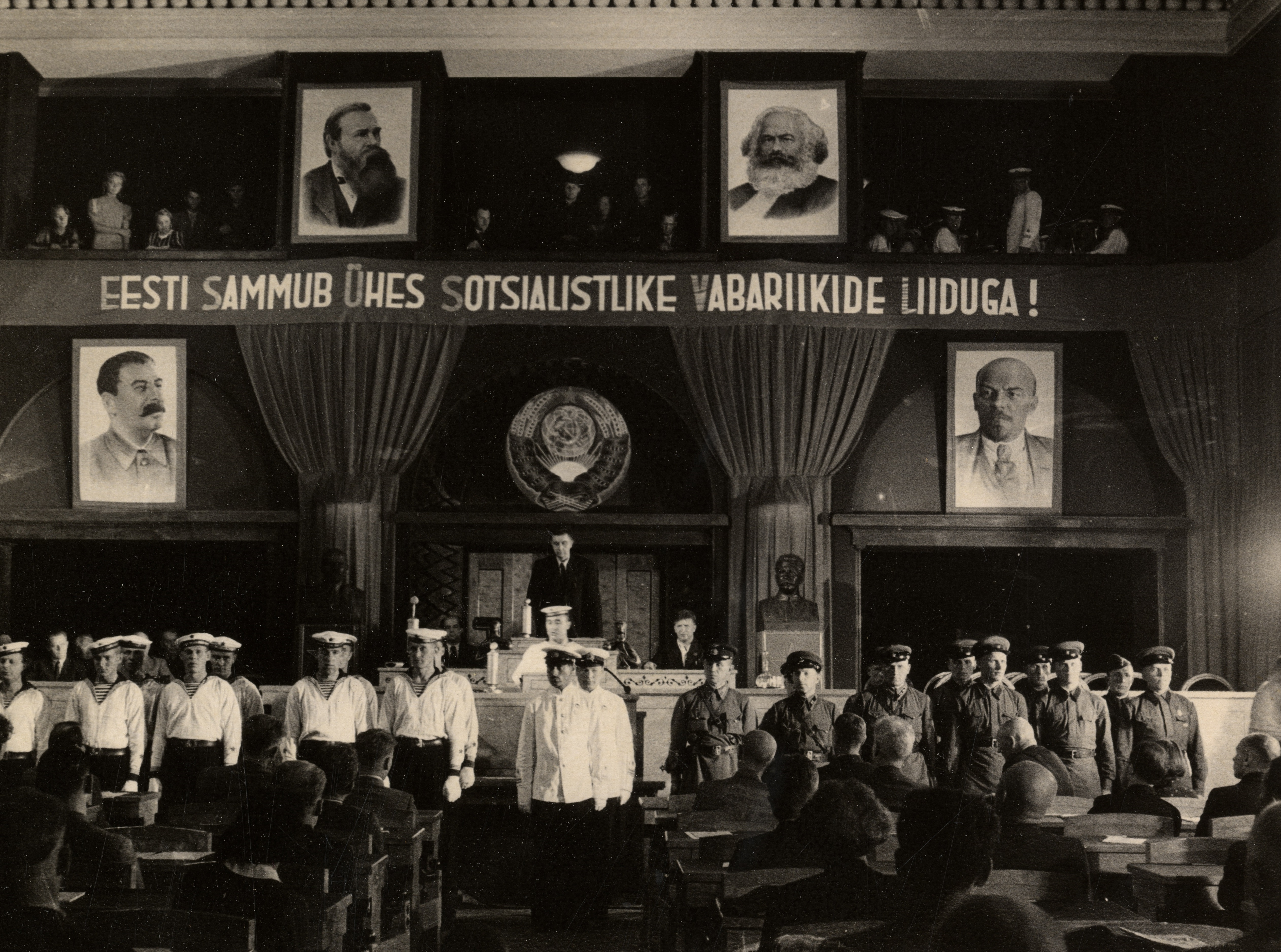Timeline: Soviet occupation of the Baltic states

80 years is about to pass from events that sealed the Baltic countries' fate for half a century.
The Molotov-Ribbentrop Pact, signed between communist Soviet Union and national-socialist Germany on 23 August 1939, launched a chain of events which resulted in the destruction of the independence of Estonia, Latvia and Lithuania by the Soviet Union.
The USSR annexed the Baltic countries, disregarding the principles of international law, and carried out a violent sovietisation process in the annexed states. "People's Revolutions" were staged to show that these nations are prepared to give up their statehood voluntarily.
What happened back then continues to influence the identity of the Baltic people. Hundreds of thousands of Estonians, Latvians and Lithuanians were killed in the war that broke out between two totalitarian regimes and during communist and national-socialist repressions.
See the timeline of these fateful events in Baltic nations' recent history
- 23.08.1939. Molotov-Ribbentrop Pact. Germany and the USSR signed a Treaty of Non-Aggression. The treaty included a secret protocol, which divided Eastern Europe into spheres of influence, disregarding the principles of international law. Finland, Estonia, Latvia and Bessarabia remained in the USSR’s sphere of influence. Lithuania was originally in the German sphere of influence, but an amendment signed on 28 September 1939 reassigned Lithuania to the USSR. Poland was divided between the two parties. The treaty enabled Germany to start the Second World War.
-
01.09.1939, 17.09.1939. Beginning of the Second World War. Germany invaded Poland’s western border on 1 September. Estonia declared neutrality in the war. On 17 September, the Red Army joined the war against Poland and invaded Poland’s eastern border. In the eyes of western countries, the delay made Germany the main culprit for the breakout of the war.
-
24.09.1939. USSR’s ultimatum to Estonia. The USSR gave Estonia an ultimatum, which questioned Estonia’s neutrality in the war in light of the escape of the interned Polish submarine Orzeł from Tallinn on 18 September. USSR demanded that Soviet military bases be established in Estonian territory.
-
28.09.–10.10.1939. Mutual Assistance Treaties. On 28 September, Estonia agreed to the ultimatum and signed the Mutual Assistance Treaty (the so-called Bases Treaty), which allowed 25 000 Soviet military personnel to be placed in Estonia. Mutual Assistance Treaties were also signed by Latvia (5 October, 30 000 Soviet military personnel) and Lithuania (10 October, 20 000 Soviet military personnel).
-
18.10.1939. The Red Army marches into Estonia. On 18–19 October, over 21 000 Red Army soldiers crossed the Estonian border. Estonia and Latvia were unable to check the number of men in the bases (especially the number of marines in navy bases).
-
10.1939–05.1940. Umsiedlung (resettlement). After Hitler announced that German minorities should be resettled in the Reich, over 14 000 Baltic Germans resettled from Estonia and 51 000 from Latvia from October 1939 to May 1940. A year later, another 7000 people resettled from Estonia and 10 500 from Latvia under USSR’s supervision. According to the secret protocols of the Molotov-Ribbentrop Pact, the Germans’ resettlement affected all areas that went under USSR’s control, because Germany wished to avoid the possible repression of its compatriots by communists.
-
15.05.1940. Extra forces brought into USSR’s bases. The USSR demanded that a supplementary agreement concerning military bases be signed. It specified which areas in Estonia were to be allocated to USSR bases (the region of Paldiski, three islands and other coastal areas) and allowed to bring in extra forces into the bases.
-
12.–17.06.1940. Military blockade of the Baltic states. The USSR established a military blockade in the Baltic states: all air and naval transport with foreign countries was cut off and Soviet forces in the bases were prepared for battle. Vehicles ignoring the blockade were stopped by force. On 14 June, Soviet air force shot down the Tallinn-Helsinki passenger plane Kaleva.
-
14.06.–16.06.1940. USSR’s ultimatums to the Baltic states. On 14 June, the USSR accused Lithuania of ignoring mutual treaties and of anti-Soviet conspiracy with Estonia and Latvia. The USSR insisted, among other demands, that Lithuania form a new government and that the Red Army be allowed on Lithuanian territory. On 16 June, similar ultimatums were given to Estonia (the so-called Narva Dictate) and Latvia. The Baltic states refrained from starting an armed conflict. The Red Army subsequently occupied Lithuania on 15 June, Latvia on 16 June, and Estonia on 17 June.
-
17.–21.06.1940. Coups d'état in the Baltic states (the so-called Turn of June). USSR’s emissaries (Andrei Zhdanov in Estonia, Andrei Vyshinsky in Latvia and Vladimir Dekanozov in Lithuania) prepared and carried out coups d'état in occupied Baltic countries that were supposed to give the impression of a domestic “democratic” change of power. The puppet governments, made up of local figures, were appointed on 17 June in Lithuania (with Justas Palecki as prime minister), 20 June in Latvia (with Augusts Kirhenšteins as prime minister) and 21 June in Estonia (with Johannes Vares as prime minister).
- 14.–15.07.1940. Puppet legislatures’ “elections”. Manipulated elections were organised in all Baltic countries, where the popular approval of pro-Soviets was over 90%. The results were known in Moscow 12 hours before the end of the elections. The puppet parliaments were formed to function as tools of the occupying regime.
- 21.–23.07.1940. Baltic puppet legislatures change the regime. The Baltic puppet parliaments assembled from 21 to 23 July 1940. They declared their countries Soviet Socialist Republics and issued a “request” to be incorporated to the USSR.
- 23.07.1940. Welles declaration. The United States did not recognise the occupation of the Baltic states by the USSR. During the occupation, the US never backed down from the declaration, which enabled the Baltic states to maintain independent diplomatic missions in the west.
- 03.–06.08.1940. Soviet Union annexed the Baltic states. By decision of the USSR’s Supreme Soviet, Estonia (6 August), Latvia (5 August) and Lithuania (3 August) became Soviet Socialist Republics.